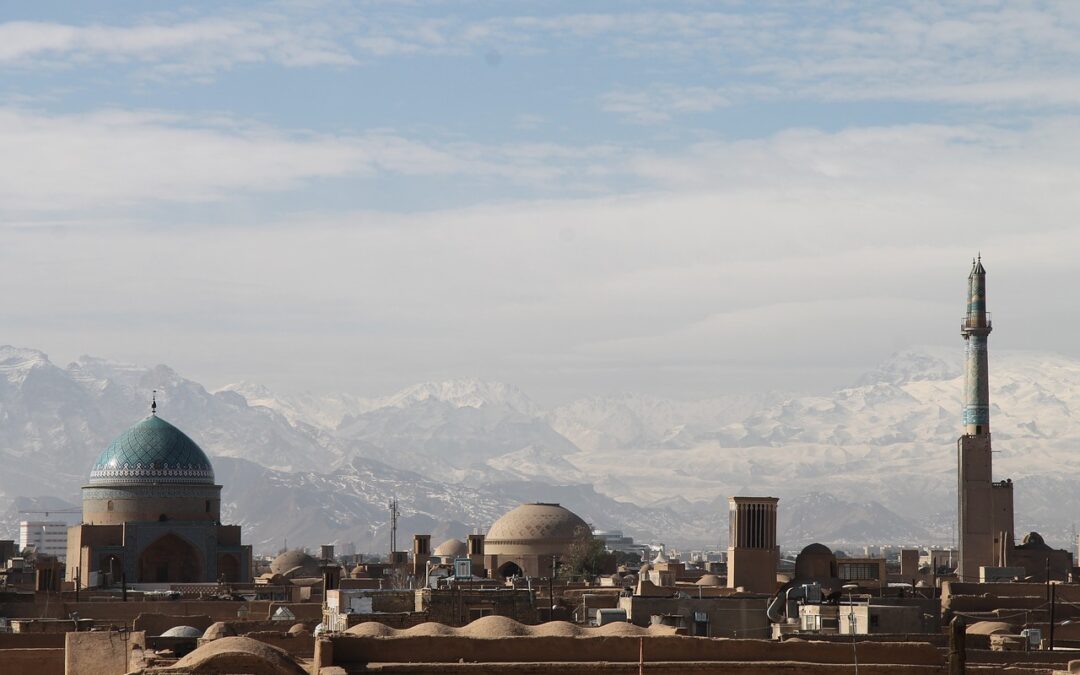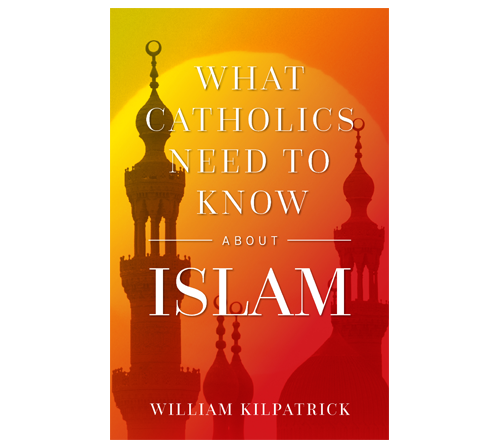Could the film be made today?
Not Without My Daughter is a 1991 film about an American citizen and her young daughter who accompany her Iranian-born husband on a two-week visit to his family in Iran—only to discover that the “visit” is intended to be permanent.
Once she realizes that she has become a prisoner of her husband, his family, and the oppressive society in which they live, Betty begins to plot a way to escape with her daughter Mahtob. The escape is made more urgent after a friendly Iranian warns Betty that when Mahtob turns nine years old, she will be at risk of being forced into marriage.
The film is based on the true story of Betty Mahmoody’s escape from Iran in 1986.
Normally, when you watch an escape story, you’re viewing an escape from a situation that existed in the past—a slave escapes from the South to the North in the 1860s, an American POW escapes from a German prison camp in World War II, a German family escapes from East Germany to freedom in West Germany.
But in the 36 years since Betty Mahmoody and her daughter made their perilous escape from Iran, not much has changed in that country, except that it is now on the verge of becoming a nuclear power.
And that’s a good reason to watch the film. It reminds us of just how fanatical the rulers of Iran are. Ruthless Ayatollahs still rule the country, women who don’t cover their hair still go to jail, and freedom of speech is non-existent. Meanwhile, like Khomeini, Iran’s rulers seem determined to export their reactionary ideology to the rest of the world. Although Russia and China are currently grabbing all the headlines, Iran continues to expand its reach and its arsenal. Meanwhile, it is forming alliances with Russia, China, Venezuela and other anti-democratic countries. According to a recent FrontPage article, Venezuela is becoming a forward base for a possible Iranian aerial attack against the U.S. mainland.
These are all good reasons to watch a film that provides insight into the mentality of a fundamentalist Islamic society. Another reason for watching is that it’s a well-made, well-acted movie, full of suspense and fast-paced action. If it were not based on actual events, it would still rate as a top-notch thriller. But it is based on facts, and they are facts that we can’t afford to ignore.
Yet we do consistently ignore the facts about fundamentalist Islam. Why? Because they clash with the diversity narrative that has long shaped our own society.
At about the same time that the film arrived in theatres, multiculturalism was becoming an ironclad doctrine in our society.
The multicultural dogma holds that despite the rich diversity of cultures, all cultures are essentially the same when it comes to basics—all believe in equality of the sexes, freedom of speech and religion and, of course, peace.
Yet, Not Without My Daughter portrays the Islamic Republic of Iran as a place of almost absolute oppression: glowering portraits of Ayatollah Khomeini look down from almost every building, the sound of ominous chanted prayers booms out from loudspeakers, and the humanity of women is blotted out by a dark wave of ankle-length chadors and tightly-fitted hijabs.
It was too much for the critics. While admitting the “undeniable” power of the film, Roger Ebert complained that no attempt is made “to explain the Muslim point of view,” and he pleads with his readers to “remain alert to prejudice and single-minded vitriol.”
Other reviewers were less even-handed. Entertainment magazine called the film an “atrocious political-exploitation thriller;” and The Washington Post said it had “the subtlety of a World War II propaganda film.” A 2016 reviewer of the film described it as “Islamophobic” and wondered why it still endures.
Despite the Iran hostage crisis, 9/11, Al Qaeda, and ISIS, the multicultural myth prevailed. Despite the bombings of elementary schools, commuter trains, and concert halls, many Western citizens couldn’t come to grips with the possibility that there existed cultures where women went about with their faces masked and where men marched in lock-step conformity to a cruel and fanatical ideology. Yet the majority of Islamic societies share more in common with Khomeini’s Iran than with Western nations.
A Pew survey of Pakistani public opinion conducted in 2009 found that 83 percent of Pakistanis favored stoning adulterers, 80 percent favored whipping thieves or cutting off their hands, and 78 percent favored the death penalty for those who leave Islam. A 2011 survey of Egyptians showed almost identical results. The Pew surveys revealed that in the vast majority of Muslim countries, a majority or a near majority hold to views that are completely unacceptable in Western societies. The evidence was there, but we preferred to believe in what one Islamic authority describes as “fantasy Islam.”
The film critics insisted that the movie presented a “grotesque” caricature of Iranian society. But as we march further into the 21st century, the existence of a masked-up, locked-down society where people adhere to strange ideologies and go into a rage if you question them, no longer seems so unimaginable.
Critics of Not Without My Daughter maintain that the father’s rededication to Islam after only a few weeks in Iran is implausible; yet, in no time at all, countless Americans voluntarily masked themselves and fell in line with the new woke ideology and its claim that men can become women and vice versa. As with Iranians, many Americans don’t subscribe to the new set of beliefs, but they know they’d better act as though they do.
America used to be the home of the brave and the land of the free, but it’s quickly becoming a nation of lock-step conformists. As we move deeper into the era of mass psychosis, it becomes increasingly difficult to deny that such things can happen in other societies. If Americans so quickly yield to the imposition of masks and a mindless ideology, then surely the same can happen in Iran.
But the oppressive nature of Islamic cultures is still denied. The multicultural myth that all cultures are okay in their own way still has a firm grip on our society. Our fear of being thought “Islamophobic” is greater than our fear of Iran’s nuclear weapons.
Which brings up a question. Could a movie like Not Without My Daughter be produced today? Probably not. How do we know? Because current instances of Islamic oppression and persecution, no matter how frequent and widespread, are carefully hidden from our sight. As far as the mainstream media is concerned, they are non-stories.
Muslims are persecuting Christians in Africa today on a massive scale, and they are doing it in the name of Allah. It’s a story that needs to be told on film; but the odds are that it won’t be. Such a film would be deemed offensive to Muslims or, in other words, “Islamophobic.”
In Pakistan, Muslims not infrequently kidnap Christian girls, rape them, and force them to marry their abductors. Authorities often look the other way. And if the girl’s parents protest too loudly, they can be arrested. Again, it’s a story that ought to be told, but don’t hold your breath.
Could a film like Not Without My Daughter be made today? It’s not likely. The United States Council of Muslim Organizations would denounce it as blatantly “Islamophobic” while it was still in the planning stage. And they would be joined in their condemnation by the United States Council of Catholic Bishops and various other church and civic organizations.
Such a movie wouldn’t stand a chance today. We pride ourselves on being “woke” (the current term for “enlightened”), but Americans of previous generations were far more open-minded—and much freer to dissent from establishment narratives
Watch Not Without My Daughter, and see the kind of society that Islamic fanatics have in mind for the rest of us.
Note: For an account of a similar experience in Afghanistan in the 1960s, see Phyllis Chesler’s An American Bride in Kabul.
This article originally appeared in the July 27, 2022 edition of FrontPage.
Photo credit: Pixabay


